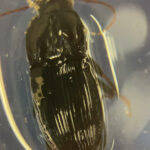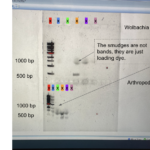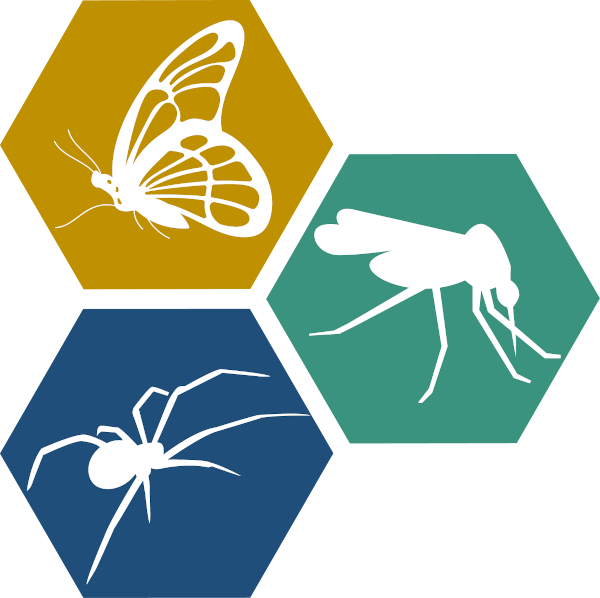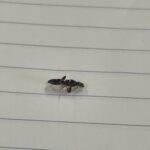Sample information |
|
| Picture |

|
|---|---|
| Location | |
| Collection date | 06/05/2023 |
| Captive / Cultivated? | Wild-caught |
| Group | Pingry School |
| Observations | Black, about the size of 2-3 rice grains Three distinct parts- abdomen, thorax, head Glossy abdomen shell with linear stripes across it
|
| Putative identification | Arthropoda Insecta Coleoptera Carabidae Pterostichus Pterostichus permundus |
Methods |
|
| Extraction kit | DNeasy (Qiagen) blood and tissue kit |
| DNA extraction location | Abdomen |
| Single or Duplex PCR | Single Reaction |
| Gel electrophoresis system | Standard electrophoresis system |
| Buffer | TAE |
| DNA stain | SYBR Safe |
| Gel images |

|
| Protocol notes | Our gel consisted of two rows. Row 1 contained DNA samples with Wolbachia primers and Row 2 contained samples with Arthropod Primers. We ran our gel for about 35 minutes. There are disparities within the size of the gel wells because when making the gels we used two different combs. See the gel image for classification of wells. When analyzing the gel, bands slightly beneath 1000bp signify the presence of Arthropodal DNA(708 bp is the location at which the Arthropod DNA is found). Bands slightly beneath 500bp signify the presence of Wolbachia DNA(438bp is the location at which the Wolbachia DNA is found). In Row 1 our controls proved successful. Bands beneath 500bp were shown for the positive control but not the negative control(columns 4 and 5). However, no bands were exhibited beneath 500bp in columns 2 and 3(the columns that contained the DNA of our collected Arthropods), meaning that Wolbachia was not amplified in our actual PCR samples. In row 2 our controls proved successful again. Bands beneath 1000bp were shown for both controls(columns 4 and 5). Both controls were Arthropods so this was expected. In column 3, a band was exhibited beneath 1000bp, confirming that Anthropodal DNA was amplified in my PCR. However, it was hard to confirm the presence of a band in column 2 because DNA ladder bled into column 2 due to a rupture in the wall barrier between the first and second wells. |
Results |
|
| Wolbachia presence | No |
| Confidence level | High |
| Explanation of confidence level | I am extremely confident that my Arthropod does not contain Wolbachia. In row 1, the row consisting of Wolbachia primers, the column containing my Arthropod’s DNA exhibited no band under 500bp proving the nonexistence of Wolbachia in my Arthropod. Furthermore, when analyzing my DNA sequence, I examined the region at the 438bp mark(at 438bp, the Wolbachia 16s region is shown) and compared it to the two Wolbachia strains. Because I found no similarities, I concluded that Wolbachia was not present in my Arthropod. |
| Wolbachia 16S sequence | |
| Arthropod COI sequence | Download FASTA
Download AB1
|
| Summary | The Pterostichus permundus was found to be negative for Wolbachia. |
 European Paper Wasp
European Paper Wasp Woodworm Ant
Woodworm Ant